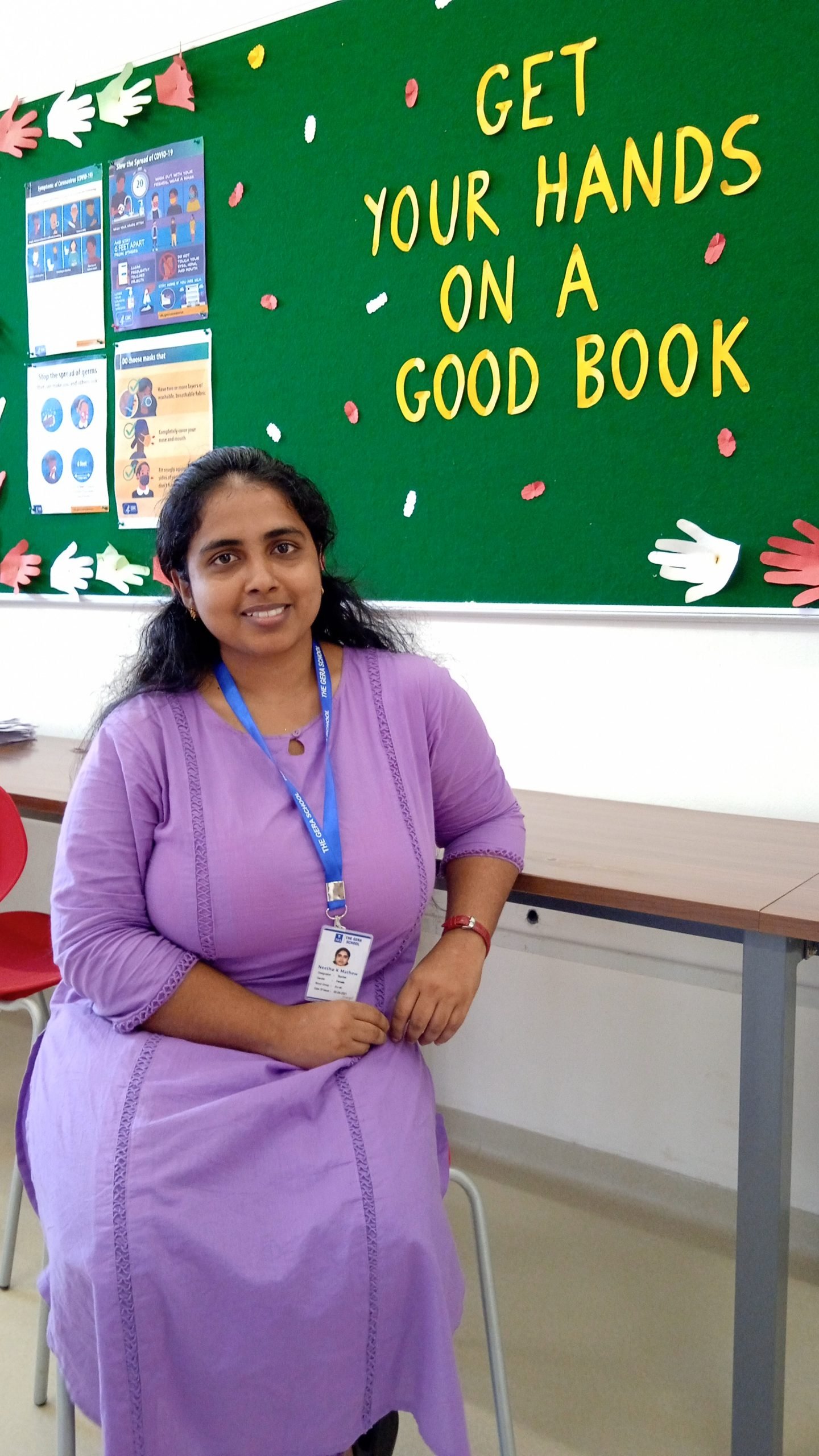‘Teaching should be experiential, interactive and differentiated’
Neethu K Mathew (Economics and Business Studies Teacher), The Gera School

In very simple terms teaching should facilitate learning by doing. The significance of experiential learning has been discussed in multiple platforms for quite some time now. Experiential teaching encourages learners to do, reflect on the learnings from doing and then applying them to other situations. Hands-on laboratory experiments, internships, practicums, field exercises, student exchange programmes, undergraduate research and studio performances are only some of the experiential learning activities.
The teaching process qualifies to be experiential when it incorporates reflection, critical analysis and synthesis of a given topic. Kolb’s (1984) cycle of learning depicts the experiential learning process focusses on integration of knowledge—the concepts, facts, and information, activity—knowledge applied to a “real world” setting; and reflection— synthesis of prior knowledge and activity to create new knowledge”.
Experiential teaching, however gains the best results when integrated and designed to be closely knitted together with interactive teaching and differentiated teaching to nurture and bring out the best in each learner in a class, irrespective of their nature and the skill-set that they already possess.
What is Interactive Teaching?
Teaching-learning can be active or interactive. An active approach when there is teacher-student interaction equally involving both a teacher and students and students are active participants in the process. Where is the difference? In contrast to active approach, interactive learning involves students’ interaction not only with the teacher but with each other as well.
Directing the teaching process into a direction which best facilitates the achievement of student goals is a prominent role of the teacher in interactive method. The teacher includes interactive activities and assignments in the lesson plan. With the progress in these activities and assignments, students acquire new information and an individual task is transformed into a group task in which each member has an integral role to play and crucial tasks to execute which will eventually lead to the whole group’s success. Interactive exercises and tasks that students are made to perform form the basic components of interactive lessons. The use of interactive teaching methods ensures full participation of students in the learning process, and which is a major source of learning.
Practice proves that using methods helps to achieve the results of modern education. Exchange information and ideas among students, contribution of each student to the teaching process, and equal involvement of all the students in the cognitive process are all possible with interactive method. It also contributes towards the nourishment of communicative skills: the ability to listen to others, evaluate different points of view, participate in discussions, make joint decisions, develop tolerance, etc.
The ARMA International Center for Education offers the following guidelines to express the focus of interactive educational teaching styles:
- Encourage student participation.
- Use questions that stimulate response, discussion, and a hands-on experience.
- Use teaching aids that press for answers, and capture/hold the student’s attention.
- Set up a workgroup environment. Involve yourself as well as the student.
Different Interactive teaching styles that make a difference Now is the time to start bringing life into teaching styles. Here are some of the most effective ways to engage your students.
- Brainstorming: Interactive Brainstorming helps students learn to pull together. Types of interactive brainstorming include:
- Structured and unstructured
- Reverse or negative thinking
- Online interaction such as chat, forums and email
- Group passing
- Individual brainstorming
- Think, pair, and share: Establish a problem or a question and then pair your students and delegate each pair to draw a conclusion, and permit each participant to define the conclusion in his or her personal voice.
- Buzz session in which all participants come together to discuss the same topic in groups within which discussion and collaboration among the students.
- Incident process which involves a case study format which focus is on learning how to solve real problems that involve real people—preparing your students for life. Provide small groups of students with details from actual incidents and then ask them to develop a workable solution. This can be very effectively used in Business Studies classes if students are exposed to real-world business problems – be it in HR, marketing or finance – to which they find solutions by working in groups. It can also be used in science classes where students work in groups to solve a technical error in a given project.
- Q&A sessions, role-plays, imitations, business and development games, video-audio materials, seminars, Socratic dialogue etc are many more techniques that could be used.
How can lessons be differentiated?
Skill sets vary substantially among students in any given class and therefore to provide right amount of challenge and aid for every student, teachers could use a key high impact teaching strategy while crafting lessons – differentiation. Basically, differentiation is to ponder over the skill levels of students and then puzzle out what can be done to nurture and nourish upon the knowledge and skill bas of every student in a class, both extensively and intensively, irrespective of the starting point. Unlike a classroom with little or no differentiated instruction in which only student similarities are focused, a differentiated classroom considers student differences as key elements in the teaching-learning process. In simple terms, differentiated teaching, through certain techniques, is used to ensure that learners at different starting points can receive the instruction they need to grow and succeed. A good differentiated teaching programme will have specific, measurable, achievable, realistic and time-based (SMART) goals as well as high-quality, evidence-based instruction.
A lesson can be differentiated by adjusting:
- Content – teacher uses different media and methods to deliver different parts of the curriculum to different students depending on their starting level and what they are expected to learn.
- Process – when the process of a lesson is adjusted, the teaching methods will be altered. This will include using collaborative learning with excelling students and explicit instruction with others, or using models and multimedia. Different students will be given different exercises and practices based on their starting point and skill bases.
- Product/outcome – this involves changing the success criteria for students to manifest what they have learnt.
Beginning with the assessment of students’ prior knowledge and skills and setting of individual learning goals, there are numerous ways to differentiate a lesson. Set the goals and the respective success criteria should be set with the students as far as possible because this fosters metacognition and self-regulation, thereby empowering students to monitor their own progress.
Teachers who understand how each student demonstrates their ability can easily meet their individual learning style and provide each student opportunities to demonstrate their true abilities. There are a variety of teaching styles that can be employed by the educator to reach the students based on their individualized, intellectual capacity. For example, in mathematics, Instructors could differentiate instruction based on the students’ readiness level. Tiered assignments, compacting, interest centers or interest groups, flexible grouping, learning contracts and choice boards are some methods that could be used. Modifications of content, process and product is possible by:
- Develop content with depth and complexity
- Push students to discover and find out solutions
- Open ended questions which would necessitate ‘search for answer’ and interdisciplinary approach.
The Mastropieri study in 2006 had concluded that differentiated hands-on curriculum was a successful means of curriculum for all students, and the use of differentiated curriculum enhancements should be considered with peer mediation in other subject and grade areas. It is also observed that lower achieving students misplaced in high track classes showed greater growth, therefore, exposing the benefits and merits of the heterogeneous ability grouped classroom setting with differentiated teaching in practice.
Also Read: Hybrid Education: Power of making education dynamic in era of new normal

















Add comment